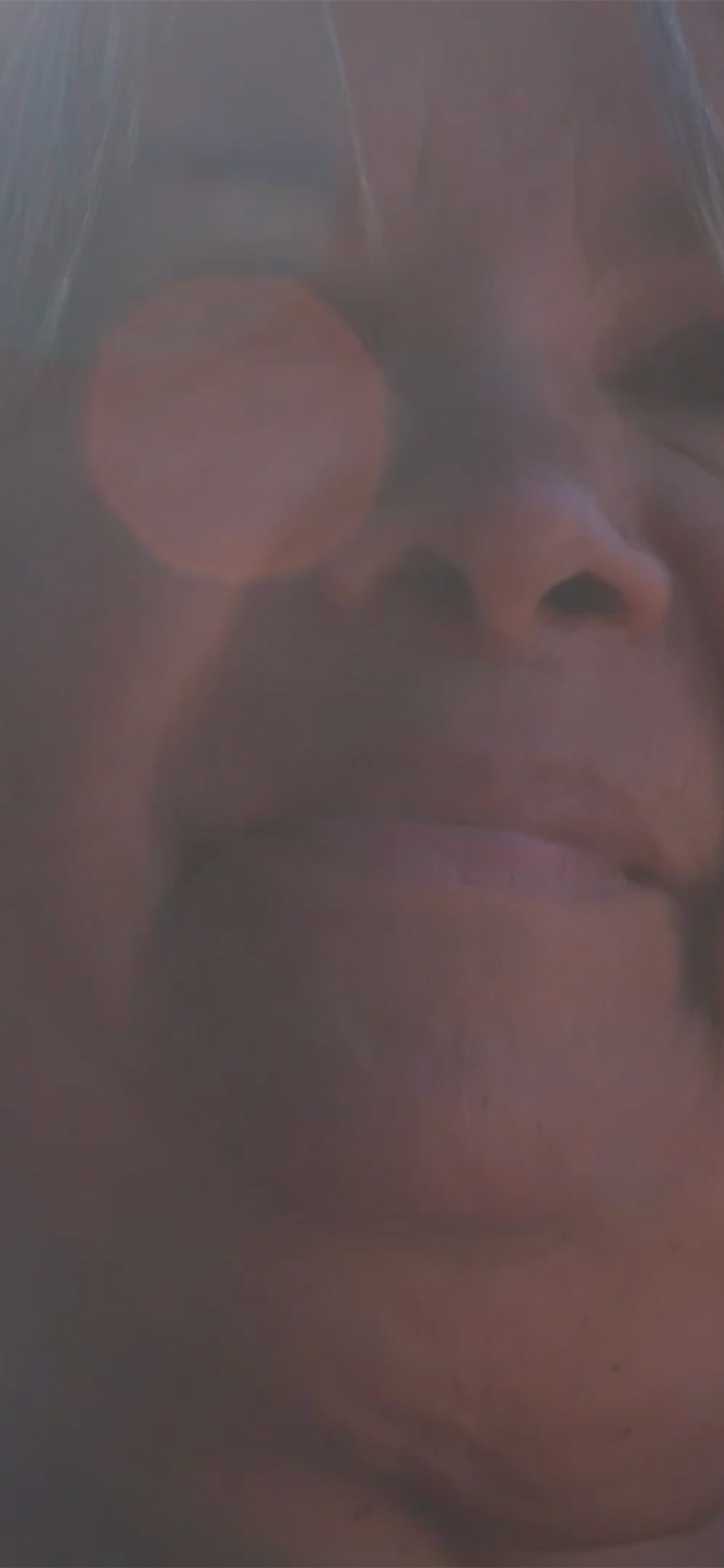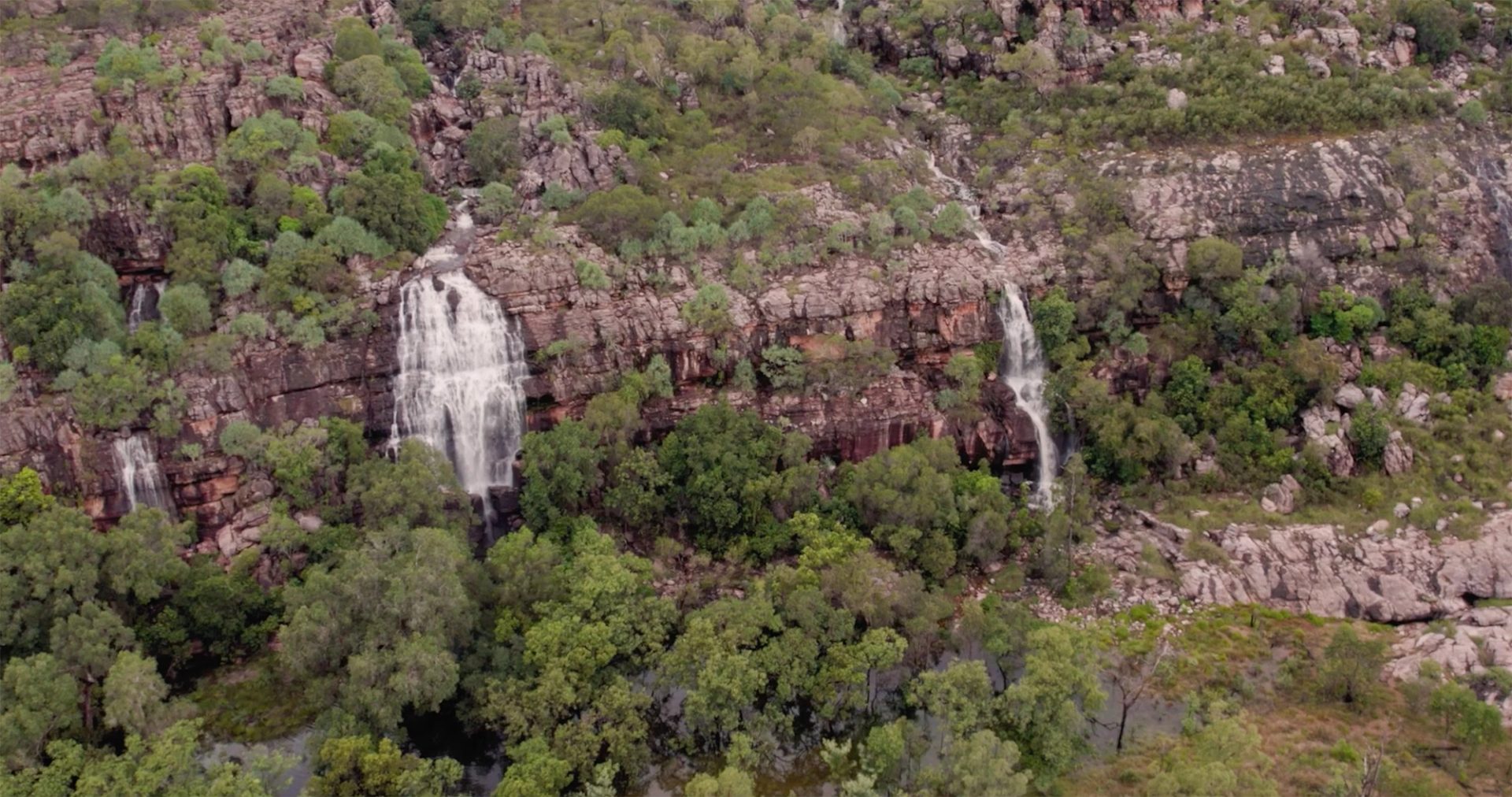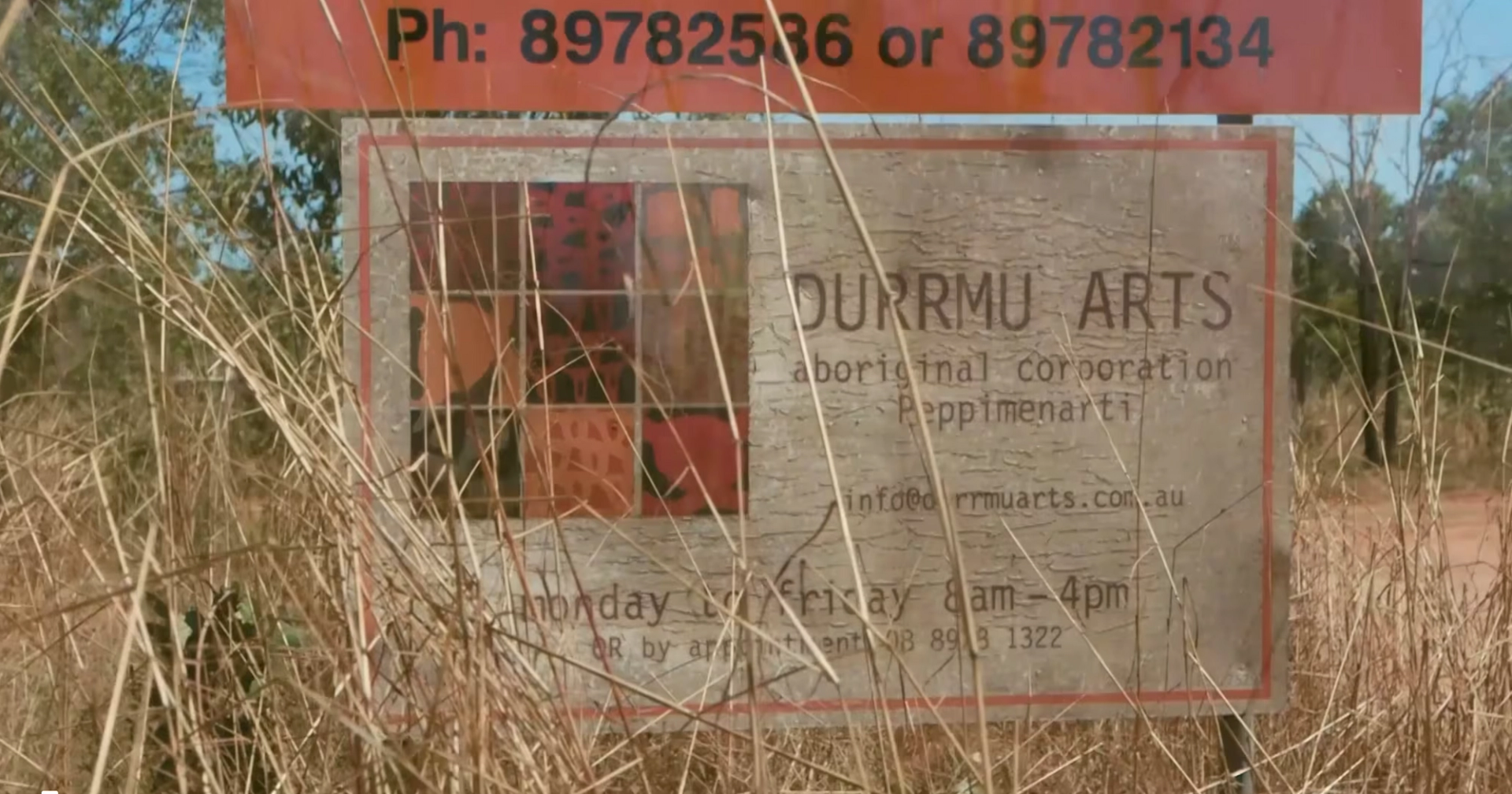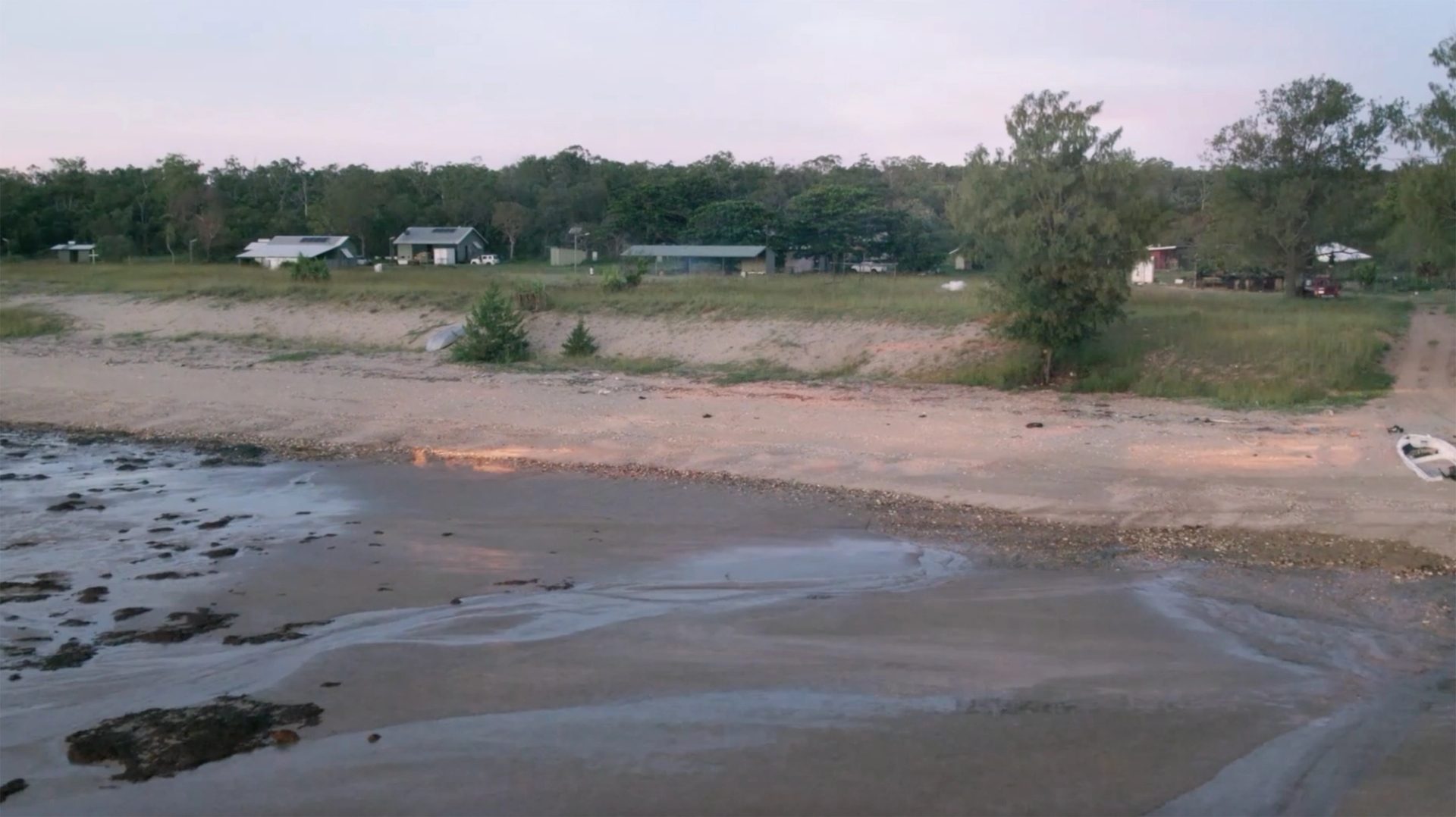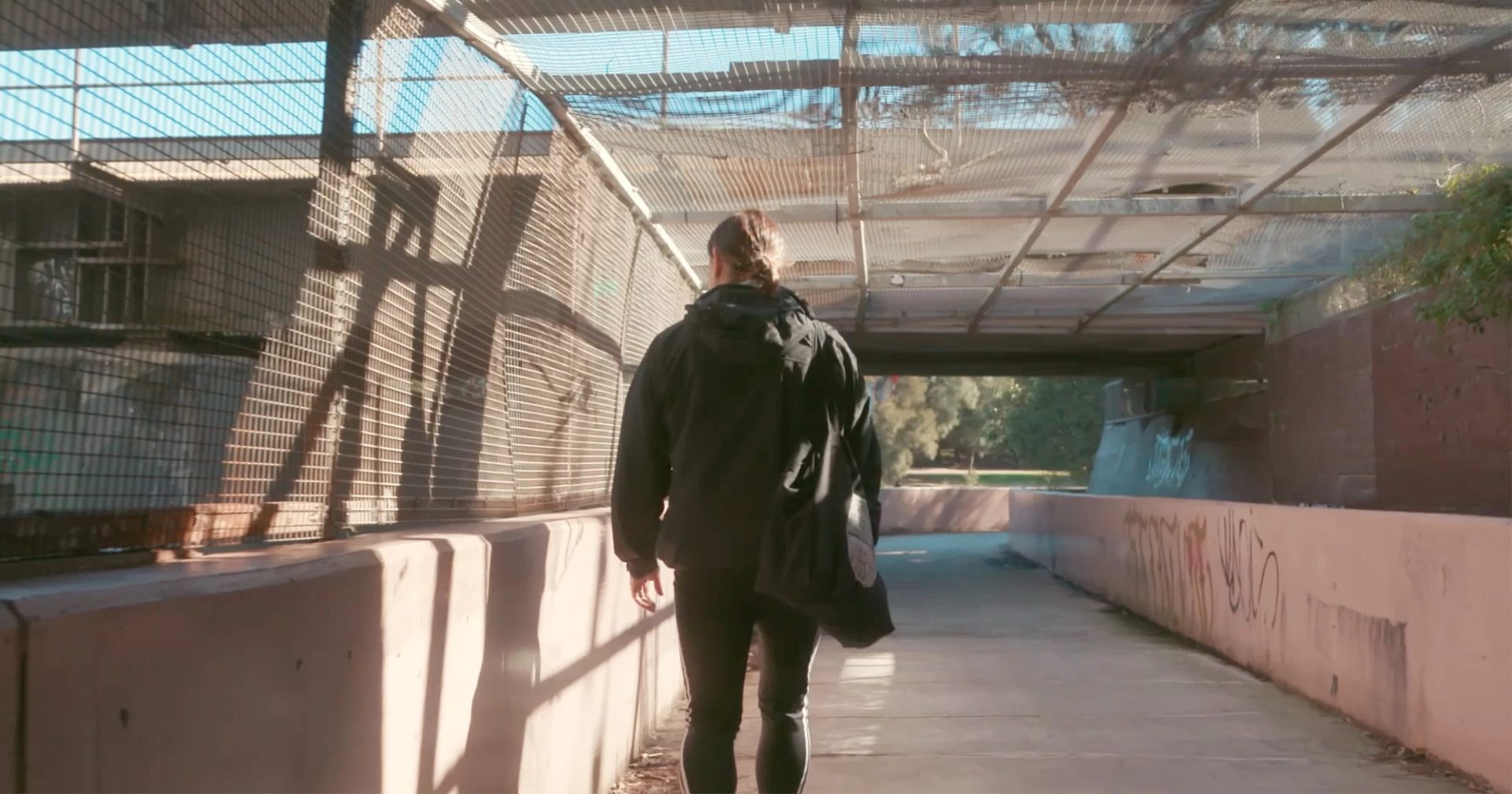Kay Lee Williams

Curator Coby Edgar reflects on her journey from Darwin to Ballina to visit artist Kay Lee Williams and observe her process in creating work for Powerhouse Castle Hill exhibition, Alchemy.
‘Kay’s work is about the tonal capacity of the medium. The love over time. The comfort of connection to place from where and who we are. It doesn’t matter, we can still respect and connect.’
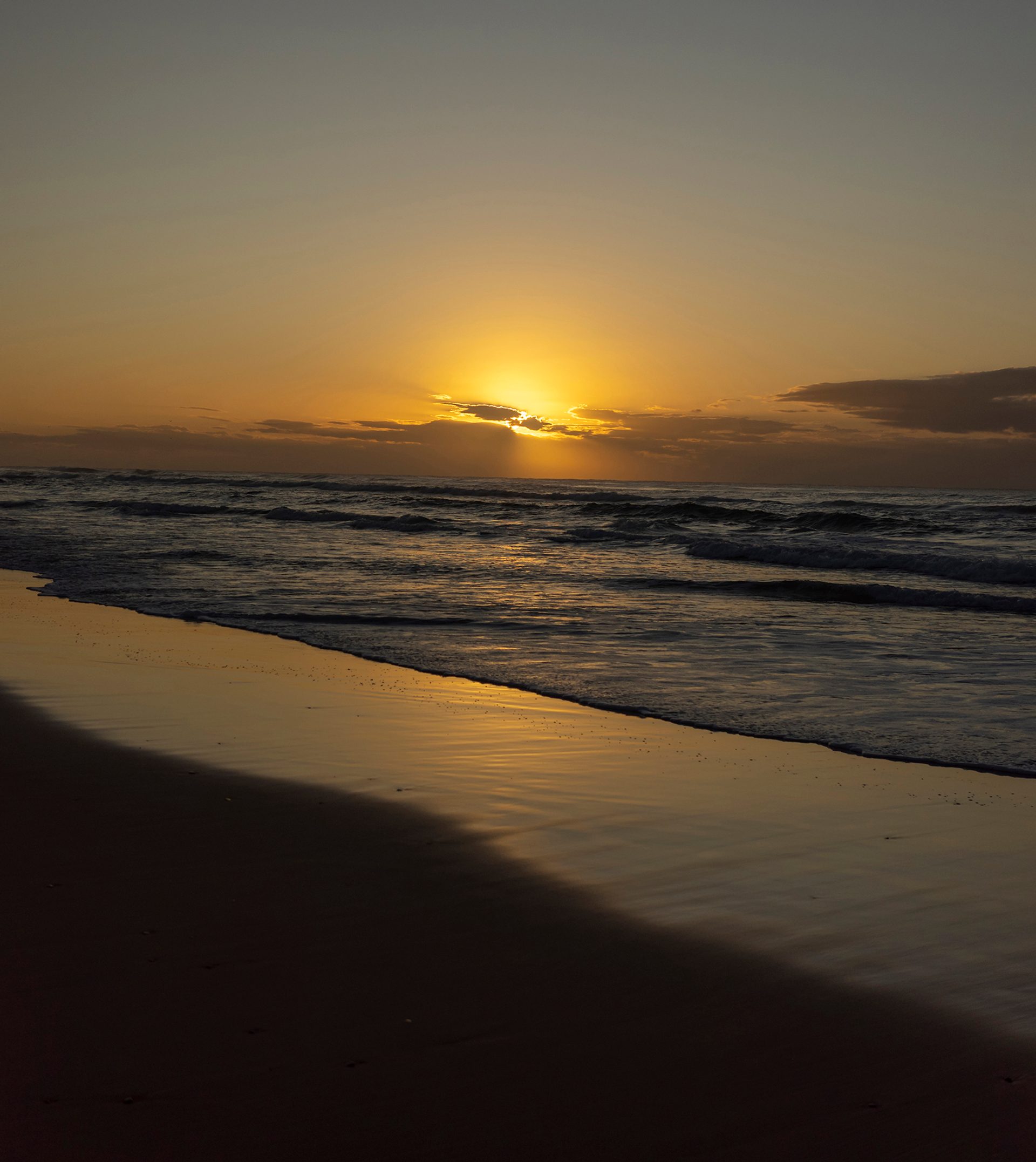
My little sister never calls me several times in a row unless it's an emergency. I was about a week away from travelling to the Byron Shire to do my last interstate trip for Alchemy when my sister called to say that my great-aunt had passed away. She was the one who could see my cheeky, stubborn nature and didn’t try to control me. She was smart enough to show me another way instead of trying to force me into something I didn’t want to do. She had raised headstrong kids. ‘Yes, Coby Ann, you can feel that way but what about […insert sensible alternative here…] bub?’. The use of Coby Ann instead of Coby is reserved for family who are about to tell me off or are being extra affectionate. It’s code for, ‘Listen to what I am about to say.’
My great-aunt was my grandmother’s youngest sister. She was still very young when my grandmother passed in her 20s in the 1970s. My own mother was still a small child. My grandmother’s Cubillo sisters became our closest female family members, as well as the women on the Lee side of the family that took in my grandmother’s four children after she had passed. You can read about my Cubillo and Lee family in the news. We, like the other families I worked with on this project, can all be read about in the news. Aboriginal people are rarely afforded a life beyond the news reel. My great-aunt’s children were the ones I would hang out with most as a kid, they are a little bit older than me and all of them are headstrong, sporty and thick-skinned. My sister called and I needed to go home.
A few days later I was in Darwin. It was time for my family. Aunty was sent off in the big, beautiful cathedral in the middle of Darwin, St Mary’s Star of the Sea. It’s a concrete and stone building built in the 1960s with beautiful stained glass, tall ceilings and Aboriginal motifs alongside the ones usually found in Catholic churches.
I stared at the Aboriginal Madonna and Child painted by exiled Czech artist Karel Kupka. It hangs to the right of the altar, high up. Bullet holes from the Japanese WWII machine guns still scar the skin of this building.
The priest was the one we have for all our family funerals. He wore a silk Tiwi-printed stole. He is geeky, sweet and kind. I sat with my mother, sister and two brothers in the front rows. It’s been a few years since mum and I have spoken but we can sit together in silent mourning. We love from a distance, until we need to be together for others. That works for us, well it works for me mostly, if I am being honest about my choices.
When the priest calls for the sign of peace, common in Catholic services, I realise mum and I are the only two who know what’s happening. She grew up with these services but never forced them on her children. I happened to have the gift of a singing voice and was in church choirs so have that familiarity with the rituals. My siblings were at sports things while I was at church singing. The priest called to the congregation, ‘Peace be with you’. My sister and brothers sat in confusion. My mother reached over my sister to grasp my hands, saying ‘And also, with you’. I responded in echo, ‘And also with you’. Jesus used this greeting of peace after his resurrection. Things can die and be reborn, in peace. It was not an empty gesture from mother to daughter in these circumstances, it was a very deep and generous gesture.
Aunty was taken to the cemetery and buried by our men. As is tradition. Next to her mother (my great grandmother) and sister (my grandmother) and with her father. I sit with my sister and look at the generations in front of me and in the ground around me. A few rows away are some of my balanda (non-Indigenous) ancestors.
It took a lot for me to get back on a plane and go back to work, I had no energy. I had to go to Brisbane and then take a bus down to Byron where Tim would pick me up in the hire car. No flights go to Byron from Darwin. I cried on the bus down. It was dark, no one could see the tears rolling down my face. It was the only private time I would have for a while so I let myself cry, just a little. The bus driver interrupted me to say he couldn’t take me to the stop he was meant to. Miscommunication in the office or something. I called Tim to ask him to meet me at the new drop off point – a casino on the Gold Coast. It was a Friday evening around 8pm and people were out, drunk as already. As I waited for Tim, I watched the young women in their tight colourful dresses, hair and make-up that literally takes hours to apply, and high heels. The men in jeans and button up shirts that did nothing to disguise their sideways walking and slurred words. That was me in my 20s occasionally too. No judgment, all relief that’s not my life anymore. The tall palm trees had fairy lights twisted around them and LED lights flashed in every direction. It was a bit much and I retreated inside my body.
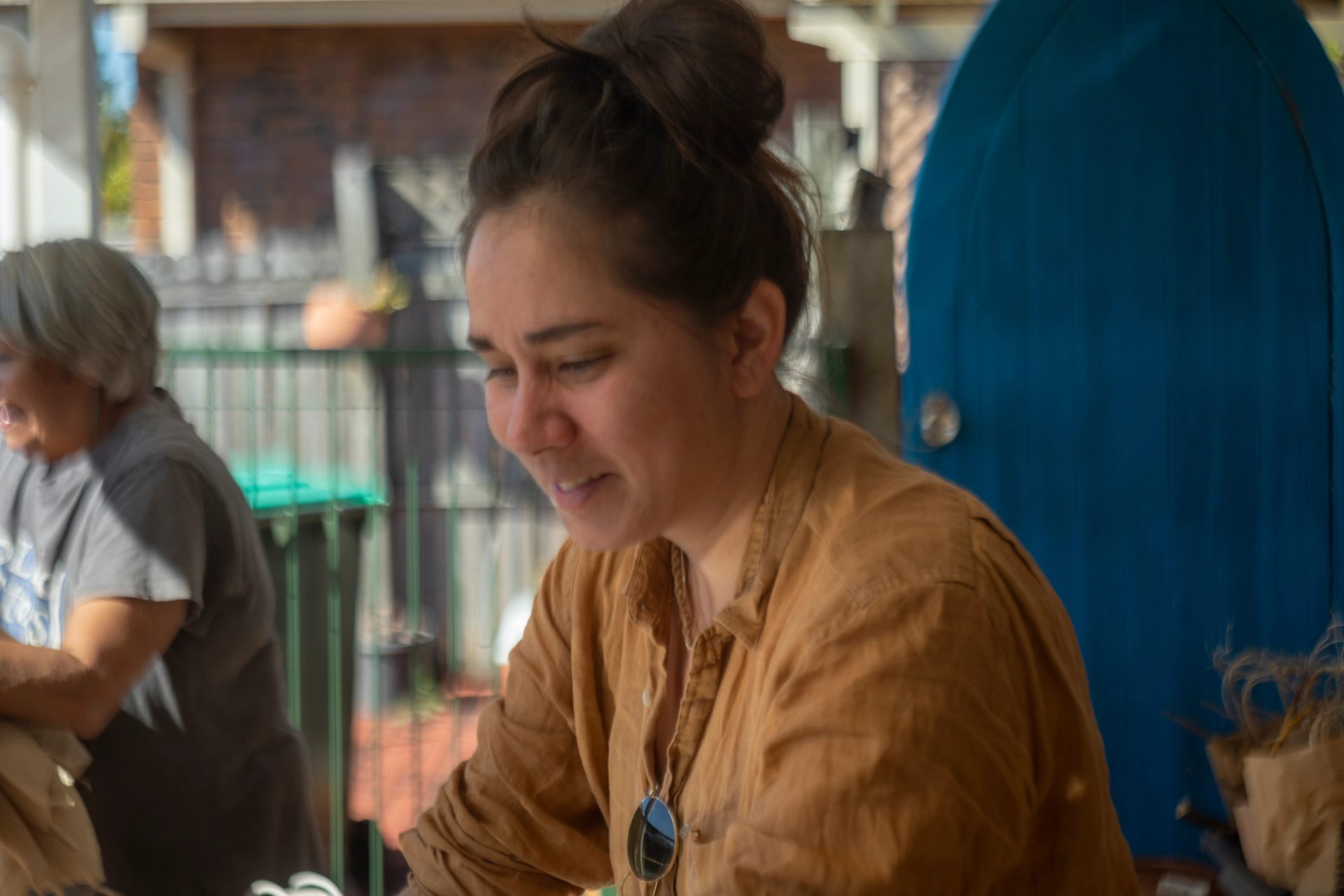
Today I sit with my blak matriarchy above and below the surface of my home Country.
Tim pulled up and I collapsed into the passenger seat. We went by the Hungry Jack’s drive-thru, he got a vegan whopper and I got the not-vegan one, and we were off on a nice drive together to Byron. Tim picked up on my energy and was very gentle with me. He played slow, deep rock music. It was ethereal and moody, complex bass lines and high strained vocals, like my body in that moment. Clever man, gentle man. We got to our accommodation, it was late so we both went to sleep. The next day Tim was up early and had been for a walk. He found a café close by for us to have morning coffee. It’s a cute little corner store with everything on the menu made from plants. Byron. We drove out to Kay’s place; she heard the car coming and was out on the curb to greet us as we approached.
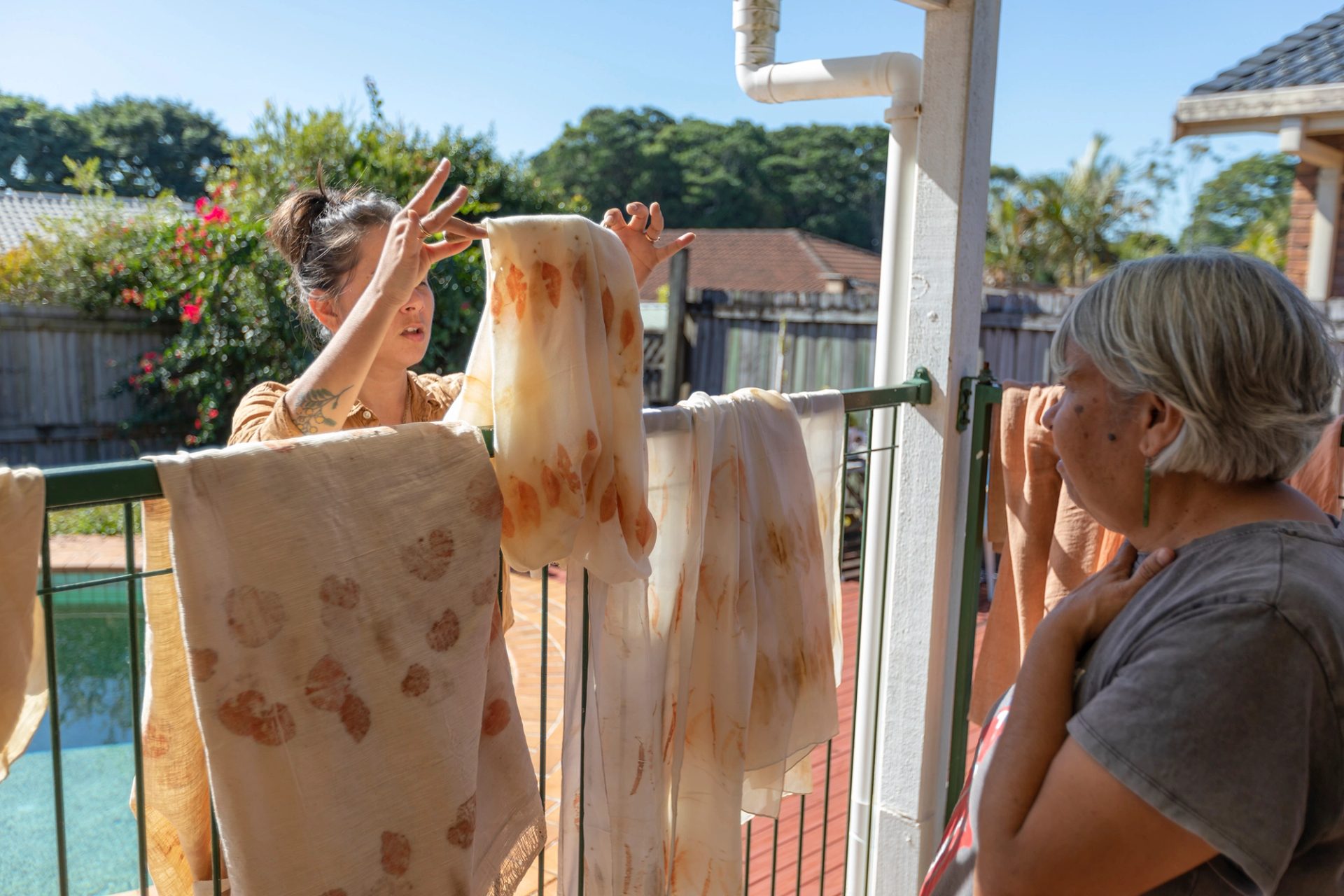
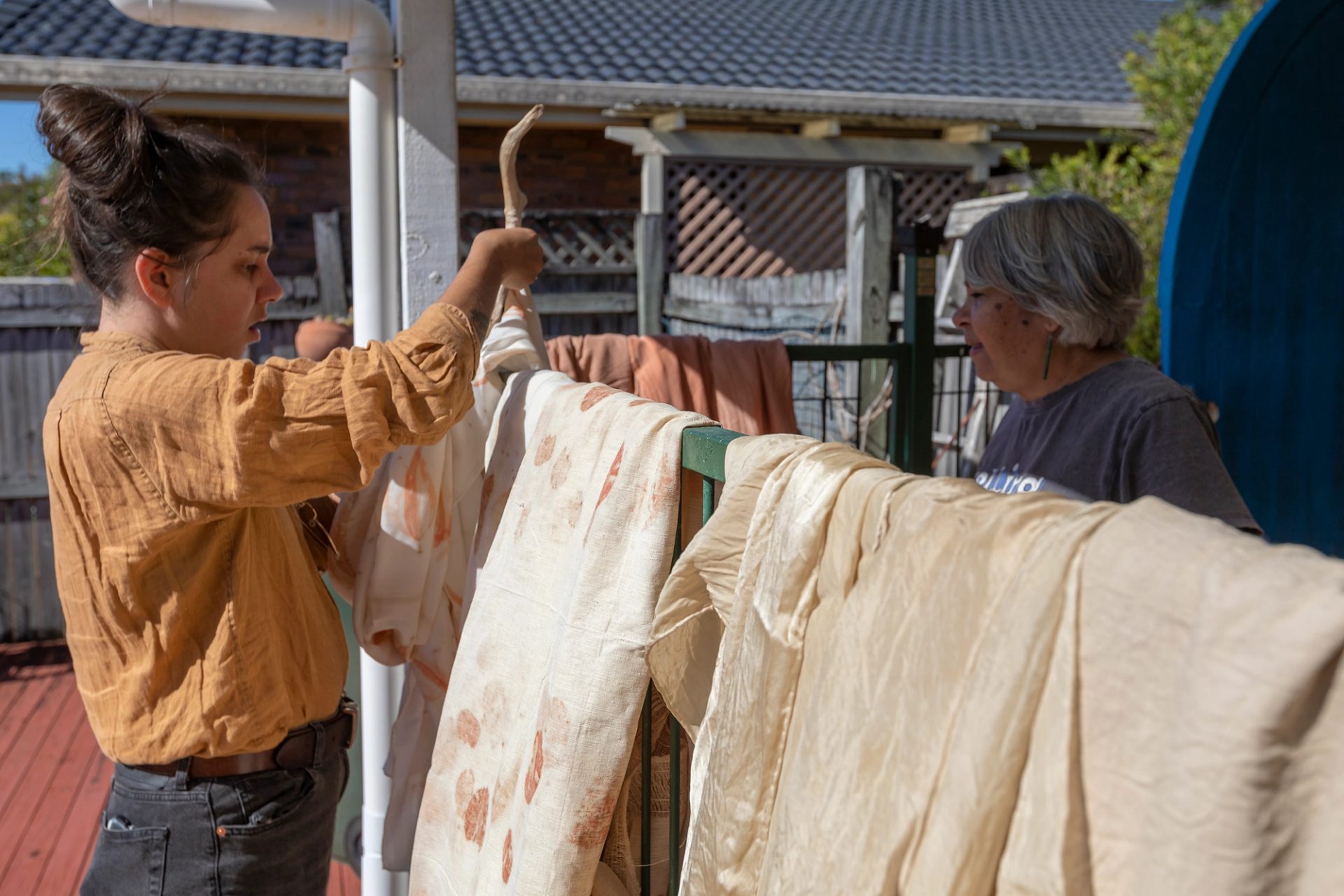
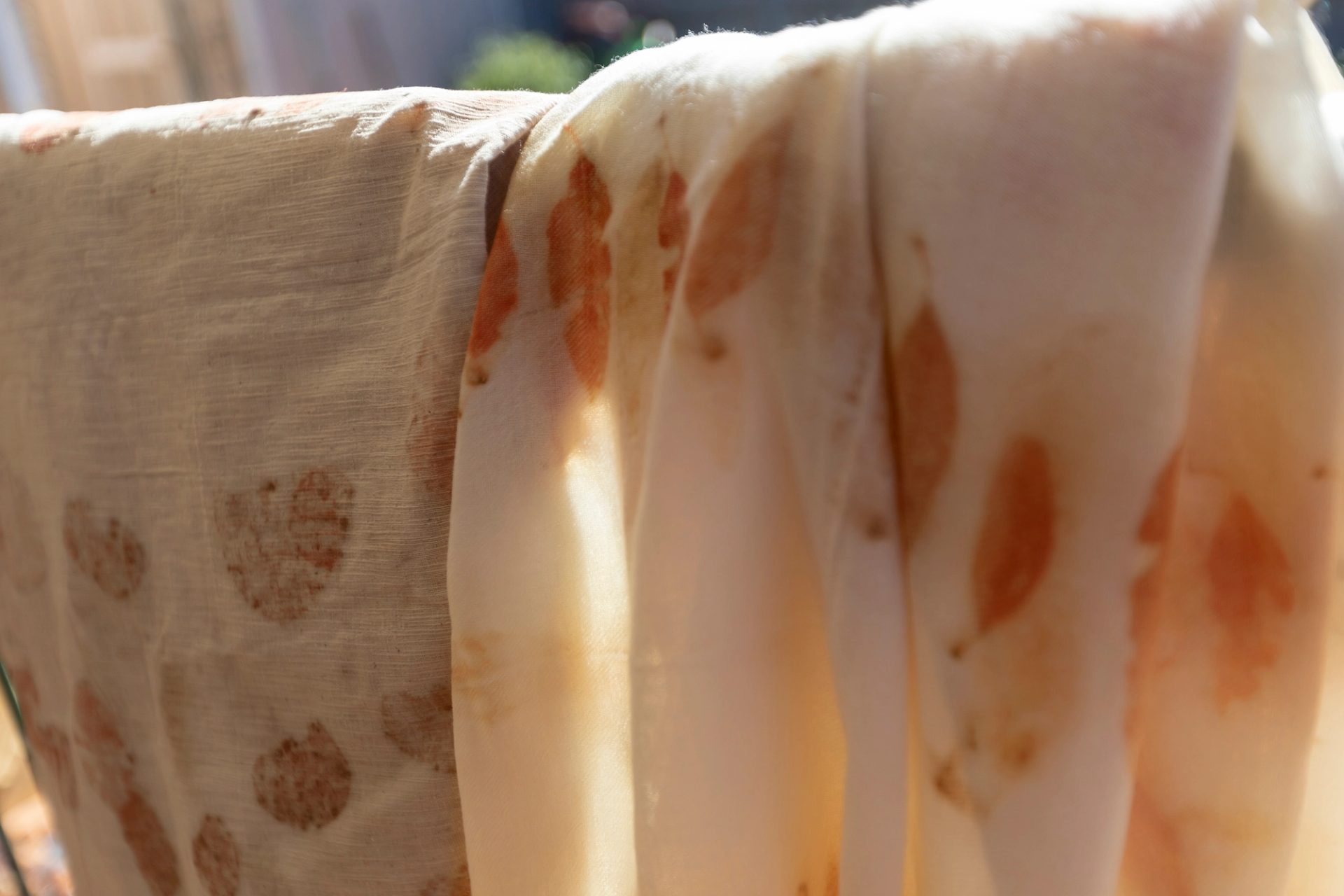
Kay Lee Williams – she doesn’t mind when I call her Aunty Kay. I did that day because I craved the tenderness of those words. She is older than me and it’s a soft form of affection for some to use relational terms, as long as the person consents. I know some artists who would slap me for calling them Aunty, regardless of their age! Not the case here. Aunty Kay was shorter than I had imagined. I felt tall, lanky and awkward, like a teenager going through a growth spurt. I felt uncomfortable in my new skin yet comfortable in her presence.
Aunty Kay’s healthy strands of thick gray hair shone in the sun, and she wore a Rolling Stone T-shirt, a small Akubra-type hat and blue jeans. A sprig of rosemary was tucked in the band of her hat, a gift from a friend at the art festival she’d been at the day before, selling her goods. The sprig of rosemary leaves was still juicy with moisture and fragrance. She invited us into her home. Aunty Kay had just moved back there after the 2022 floods. She offered us a coffee and we sat down for a chat. Kay is a high frequency person, bright energy and a curiosity for life emanates from her. She is warm to be around.

Alchemy is Kay’s first exhibition, although she has been practicing a variety of art forms for most of her life. Kay showed us the pieces she had been working on, nervously might I add. I had spoken a lot with Kay about her work for the show, more than with any of the other artists. She is well-known for making naturally-dyed scarves that she sells at markets around the place. They are delicate, precious things. From the first conversation we had, I was clear with Kay that I wasn’t interested in over-conceptualising her work. I was interested in a conversation about being wrapped up though, especially in a wearable item.
Well before my great-aunt's passing, I had been thinking of my nanas and aunties who were Catholic and the way they would make their beds. The deeply-embedded routine, the fold of the sheets at the corner. Surfaces smoothed out. I thought about how comforting it is to borrow a family member's jumper, scarf, pillow or blanket and to wrap yourself up in it, how that feels safer than your own things somehow. I told Kay that is how I feel about her scarves, that they are warm and comforting like a nana’s blanket. We talked about comfort, love and acts of care that come from our women. How we didn’t really have any assets to pass on, no inherited wealth to speak of. Fabric items would be passed down, a hankie, a blanket, an item of clothing. Something to hold close to your body. I didn’t wait for the second day to interview Kay. She and I had spoken plenty over the months and I didn’t feel that we needed a day to get used to each other. I crossed my legs in a chair while she sat on the couch. Speaking to her was organic, easy, one take. She had lots to say and I didn’t need to prompt her. Kay is so generous in spirit.
Kay works like a true scientist. She showed me her old faithful pots, her new ones, all the bottles of liquid, all the leaves. Kay doesn’t use fresh stuff. She uses botanicals that have dropped and have had some time to stiffen and grow their own organisms.
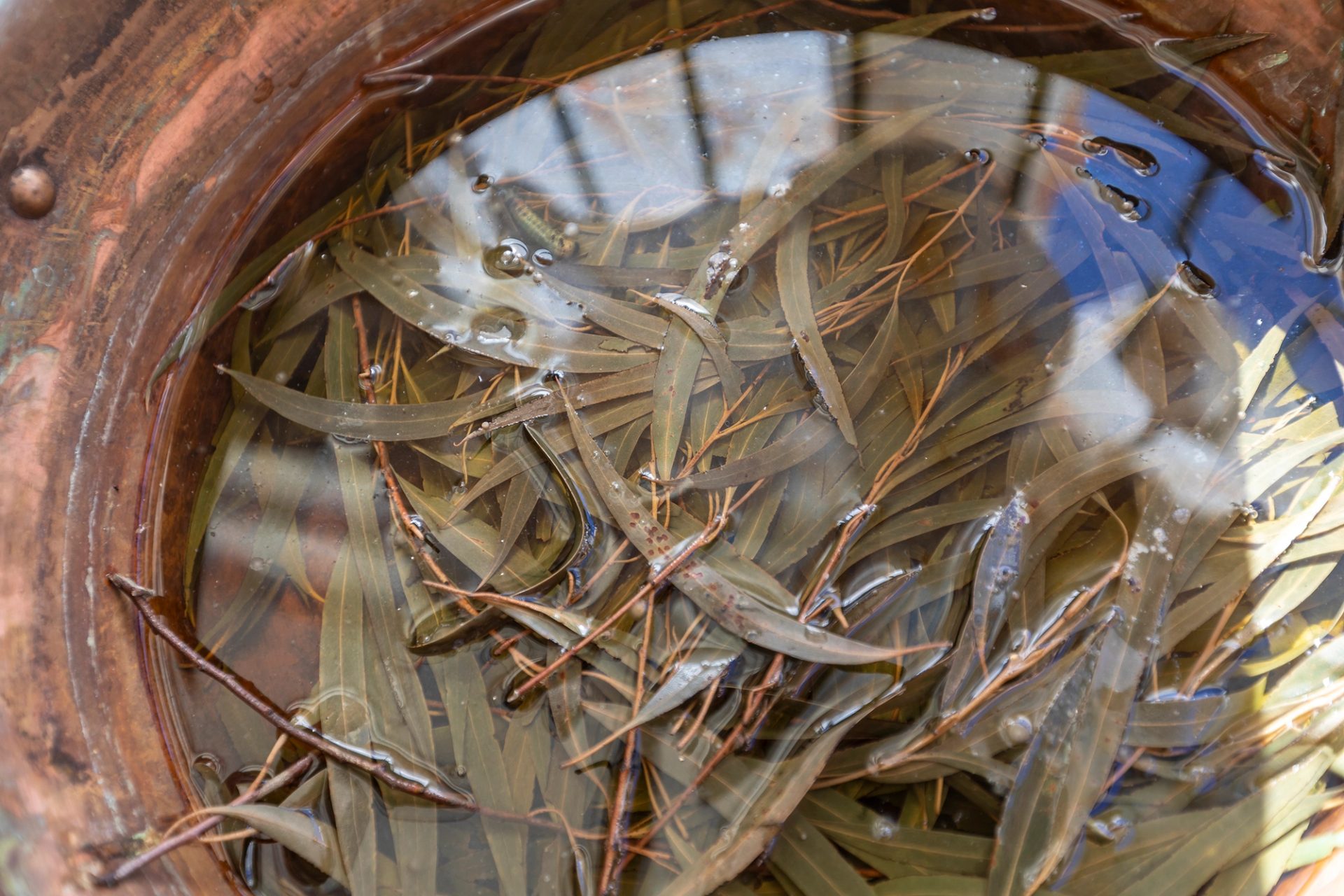
She gets her plants from the local florist and arborist or collects things from the ground on the side of roads, especially after a storm. She also keeps things from trips back home or things gifted to her from other mob. It isn’t her Country that she lives on so she waits to let Country give her things, in their way. The consciousness, the respect, the deep understanding and connection is what she receives. She doesn’t want, demand or take. It's different to the pandanus ladies, but the same as most fabric-dyeing mob. She lives in an urban environment and not on her traditional Country, and her practice reflects this.
Kay brought out what she had been working on. She had been trying to finesse the colours in a spectrum. Greens, yellows, pinks, reds, browns. She only used rainwater from her tank and used nothing that had been through a ‘process’. The way she works is very specific, only changing one thing at a time to make an accurate assessment of her practice.
She had taken the conversations we’d had seriously, she knew Alchemy would be an extension of Eucalyptusdom and had restricted her botanicals to the Eucalypt species. She slow dyes, time is important to her process. As we watched, she grabbed a linen and a silk piece out of the same bath. It smelled gorgeous, the fabrics were green. The silk had taken the dye on more than the linen, she wasn’t happy with the result and grabbed a container of green fluid. Something from another time, added in the hope it would give the kick she was after. Give it some time. Time. This was probably the best place I could have been with my sore heart. Time.
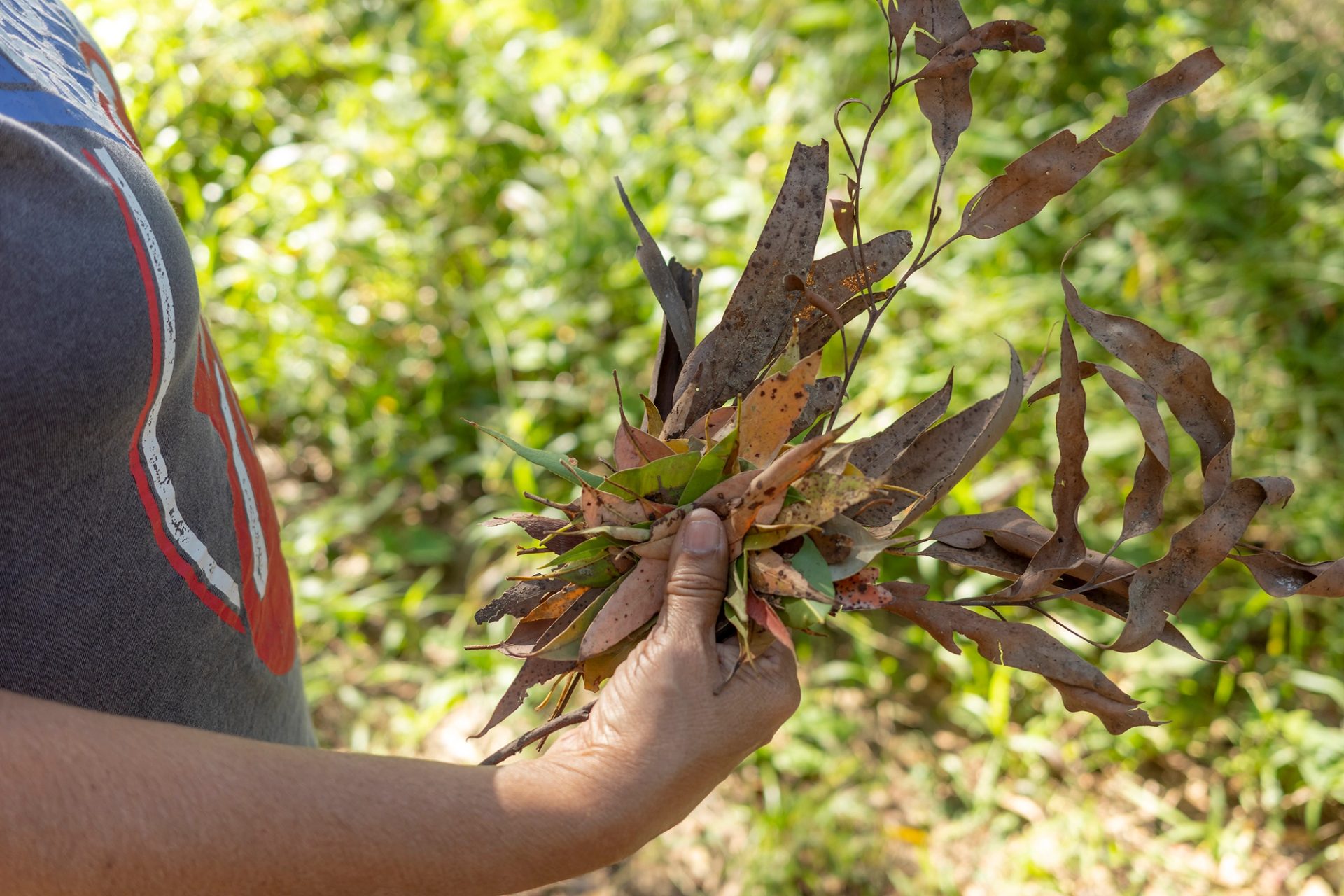

Kay, Tim and I jumped in the car and went for a cruise the next day. To the mountain she last visited with her friend, the botanist. She picked up some bits and told me about them. She also saw a spider web; I learned that is her fear. Spiders. I am good with spiders, not so good with snakes, so I walked ahead. Tim filmed us as we did our thing.
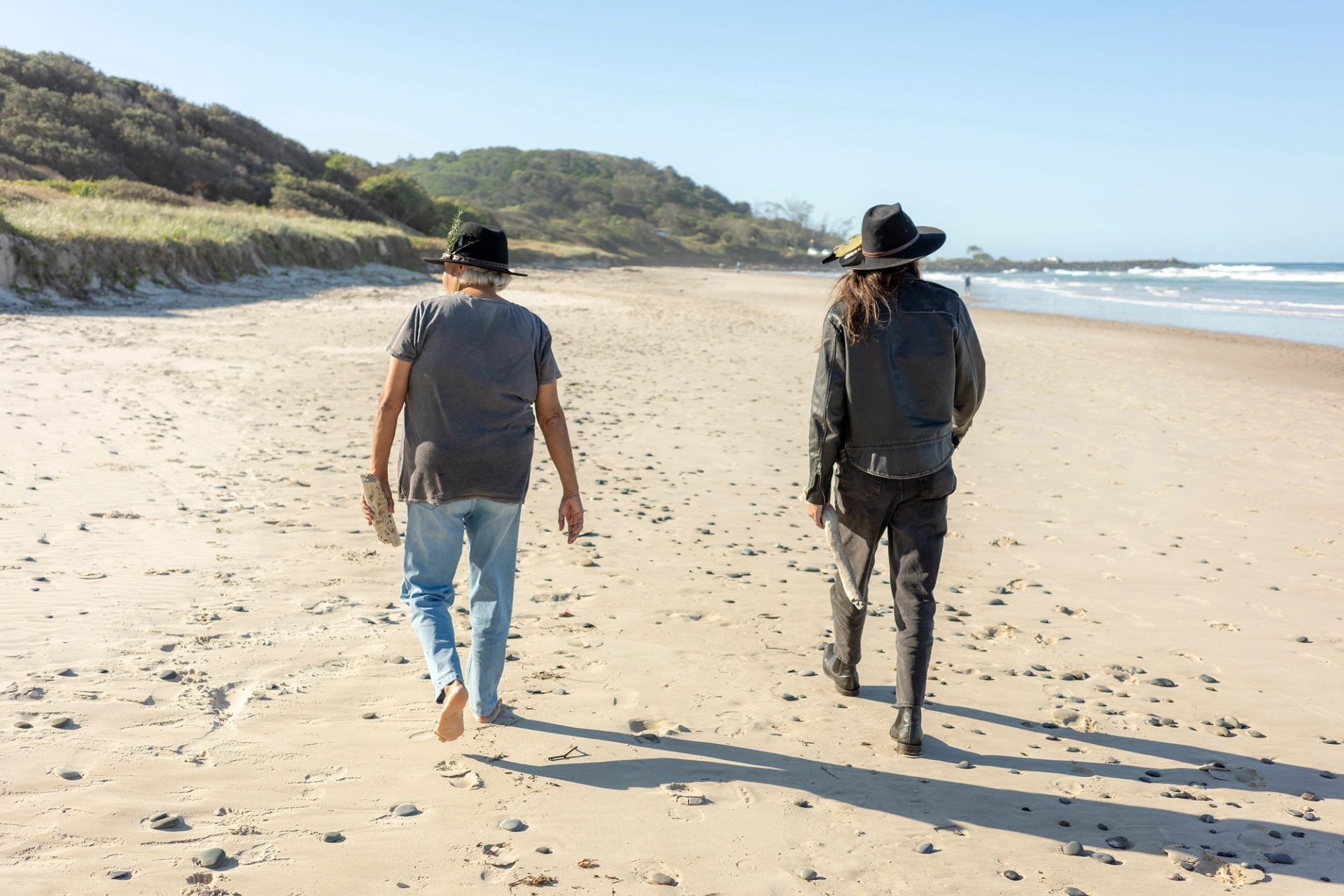
Tim and I went for dinner and I ordered a steak and a no-alcohol beer. I had been on parasite meds for a week, one week left. Probably picked up from one of the many communities I had been to, my city gut reacts, contracts. It happens. Bed felt cold that night. I was restless.
The next day Kay greeted us in another awesome band shirt. She is stylish, this woman. We headed to Shelly Beach where Kay had lived when she was a younger woman. She told me about when she moved here, how she could see the ocean and the rent was really cheap then. She would walk the beach every day, sometimes she still finds things there to play with in her dyes. We found some driftwood as we walked the beach. Kay took her shoes off. I didn’t. I was hurting. I am a saltwater woman, that touch was not something I could cope with just then. Even though I knew it would be good for my soul. I would go there, but not right then, not in front of her and Tim. Tim noticed. I watched her toes in the sand and watched her feet as the sea lapped against her skin. I followed Kay and Tim’s footsteps as he filmed her in one of her local safe spaces. People were sunbathing, walking their dogs, surfing, doing their thing. It was recognisably European everywhere we went. I saw one other visibly blak First Nations man. He was fishing with his mate.
We stopped off at an estuary. This is where Kay sees lots of usable material washing up onshore after a big storm. Nothing to be found that day besides waterfront houses, people fishing and the local tin man doing an important job for society. Kay told me he sometimes goes to karaoke and can pump out a great tune! Legend.
We got back to Kay’s and decided we had all we needed besides a nice portrait of her. There was a small alleyway a couple of houses from hers. She took us there and we played spot-the-plants and named their uses. This is such a normal thing for First Nations women to do with the young ones and each other. It relaxed my mourning body. Aunts (our people) are everywhere, so are our botanicals. We are always at home when Country waits on us. Which it always does.
Kay pulled out her scarf and stood holding it up to the mid-afternoon sun. The exhibition will display her layers of Country, her pots, and a circle of botanicals and sand.
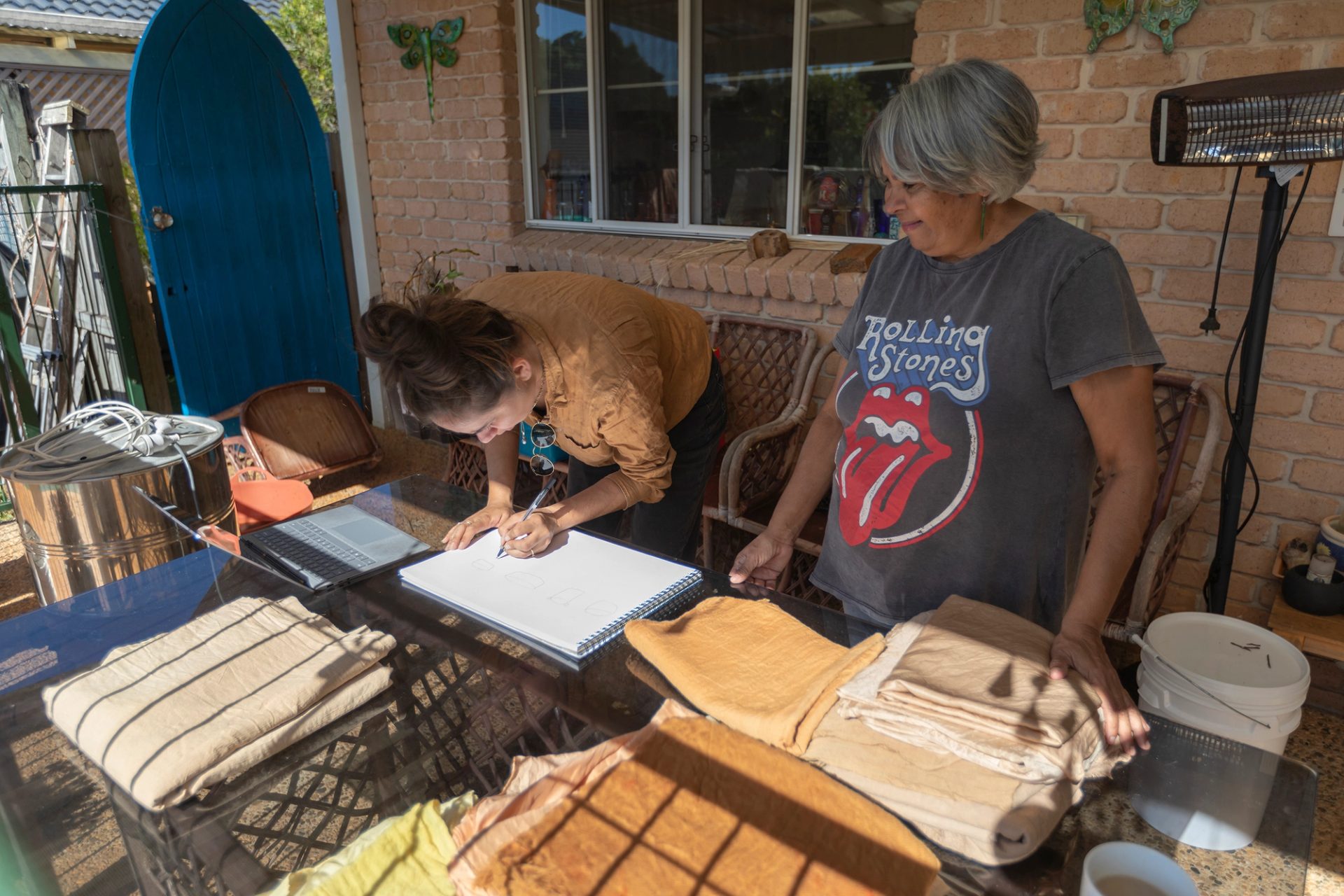
It’s important for her to have a representation of the community that contributes to her practice. Even though she is an urban artist, she has her community and that’s how she learns. That’s the circle. We sketched some display ideas, I will FaceTime when I install the works, so she is happy.
Her work is about the tonal capacity of the medium. The love over time. The comfort of connection to place from where and who we are. It doesn’t matter, we can still respect and connect. People who wear her works are wrapped in her and Country. She is a conscious maker and you feel it when her works wrap around your neck and arms. Your heart doesn’t feel so heavy. You feel held. I felt this way before my heartache, and I am grateful that was where I landed after my heartache, there with Aunty Kay. It was soft, warm, safe.
Country is family and home is everywhere, when someone can harness that and gift it. There is less space for your heart to break because you are held. Aunty Kay makes things that hold people.
Kay Lee Williams
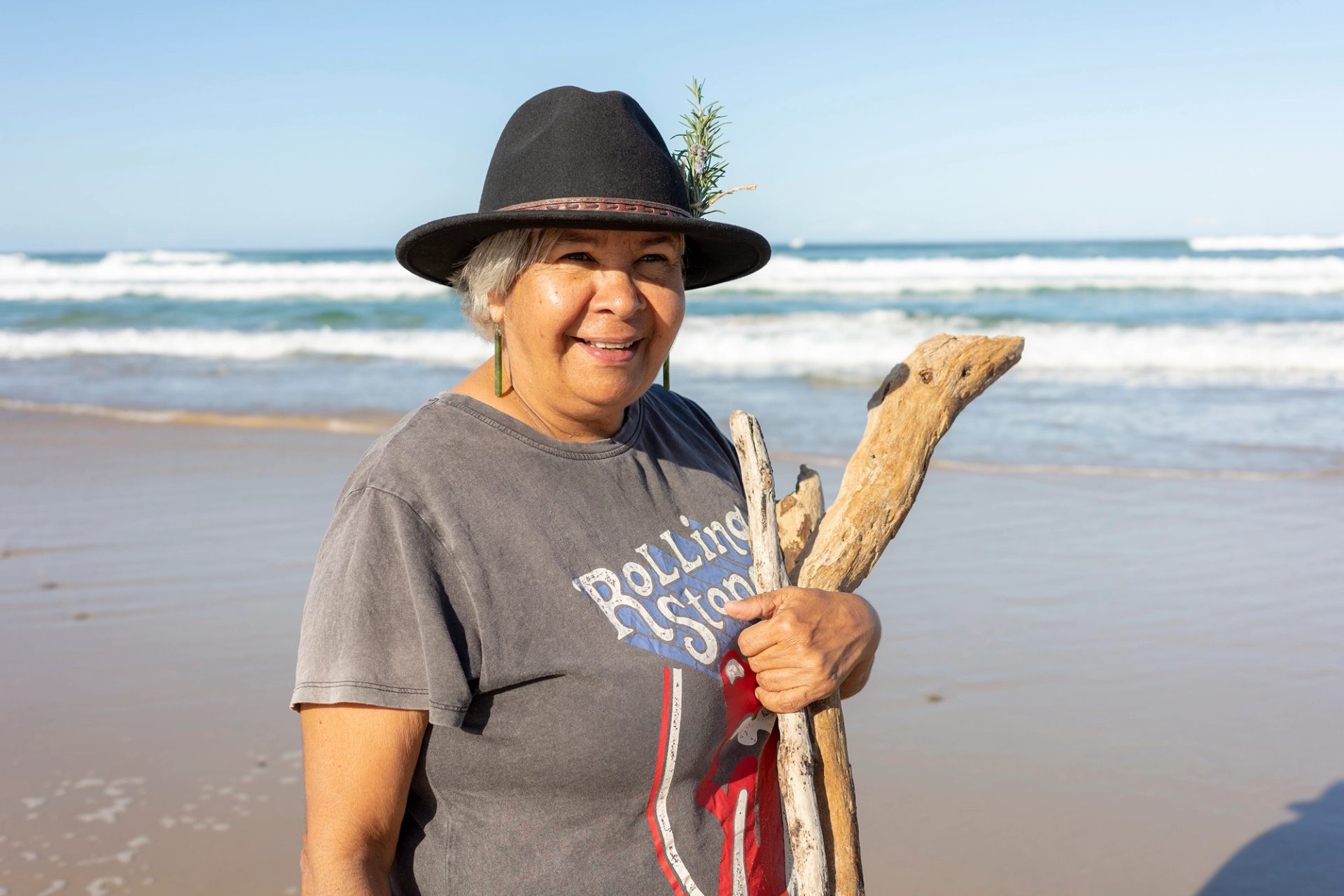
Kay Lee Williams is a Kamilaroi woman who was born in Narrabri, NSW, and raised in Western Sydney. She currently resides in the hinterland of the Far North Coast of NSW. She has been interested in art since she was very young and first began painting traditionally in a small town called Babinda, outside Cairns, in 1984. Kay has a Bachelor of Arts (Visual Arts) from Lismore’s Southern Cross University. Kay enjoys all forms of creating, including drawing, sculpture, ceramics, dyeing and weaving textiles, painting and printmaking. Kay sources plant fibres, leaves and roots to create natural bush dyes and surface patterns on textiles.
Her work is about identity and place, illustrating her experience with traditional and contemporary techniques and cultural themes, and her identification with the significant sites where she has lived.










